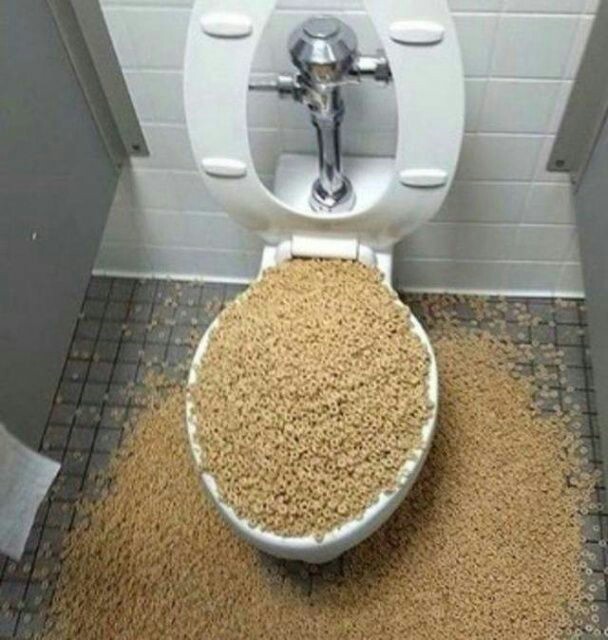Are You Able to Dispose of Food in the Toilet?
Are You Able to Dispose of Food in the Toilet?
Blog Article
They are making a number of good pointers relating to Flushing Food Down the Toilet? as a whole in this post down below.

Introduction
Many people are usually faced with the predicament of what to do with food waste, particularly when it comes to leftovers or scraps. One usual concern that occurs is whether it's fine to purge food down the bathroom. In this post, we'll explore the reasons people could take into consideration flushing food, the repercussions of doing so, and alternative approaches for appropriate disposal.
Reasons that individuals could consider flushing food
Absence of recognition
Some people may not know the prospective harm brought on by flushing food down the toilet. They may erroneously believe that it's a safe method.
Convenience
Purging food down the commode might seem like a quick and very easy remedy to throwing away unwanted scraps, particularly when there's no neighboring trash bin offered.
Laziness
In some cases, individuals might simply pick to flush food out of sheer negligence, without thinking about the repercussions of their actions.
Consequences of flushing food down the bathroom
Environmental effect
Food waste that ends up in waterways can contribute to pollution and injury aquatic environments. Furthermore, the water utilized to flush food can strain water sources.
Pipes issues
Purging food can cause clogged pipes and drains pipes, creating pricey pipes repair services and inconveniences.
Sorts of food that need to not be flushed
Coarse foods
Foods with fibrous appearances such as celery or corn husks can get entangled in pipelines and cause clogs.
Starchy foods
Starchy foods like pasta and rice can soak up water and swell, leading to clogs in pipelines.
Oils and fats
Greasy foods like bacon or food preparation oils should never ever be purged down the commode as they can strengthen and cause clogs.
Proper disposal methods for food waste
Utilizing a garbage disposal
For homes outfitted with waste disposal unit, food scraps can be ground up and flushed through the pipes system. Nevertheless, not all foods appropriate for disposal in this way.
Recycling
Particular food packaging materials can be reused, decreasing waste and minimizing environmental influence.
Composting
Composting is an eco-friendly way to take care of food waste. Organic materials can be composted and used to enrich soil for gardening.
The significance of appropriate waste management
Decreasing environmental damage
Appropriate waste monitoring practices, such as composting and recycling, assistance decrease contamination and preserve natural deposits for future generations.
Shielding pipes systems
By preventing the practice of flushing food down the commode, home owners can stop expensive pipes fixings and preserve the integrity of their pipes systems.
Final thought
In conclusion, while it might be tempting to purge food down the bathroom for ease, it is necessary to comprehend the possible repercussions of this activity. By adopting appropriate waste management methods and getting rid of food waste responsibly, individuals can add to much healthier pipes systems and a cleaner atmosphere for all.
FLUSH FOOD DOWN THE TOILET?
FLUSHING FOOD CAN CAUSE BLOCKED DRAINS IN YOUR HOME
All of the plumbing fixtures in your home are connected to the same sewer pipe outside of your home. This outdoor sewer pipe is responsible for transporting all the wastewater from your home to the Council sewer mains. Even small pieces of food that go down the kitchen sink can cause problems for your sewer. It should therefore be obvious that flushing larger bits of food, such as meat, risks a clog in either the toilet itself or the sewer pipes. Flushing greasy food is even more problematic because oil coagulates when it cools, coating the interior lining of your pipes.
THE TOILET IS NOT A BIN
Food isn’t the only thing that people shouldn’t be flushing down the toilet. People use the toilet to dispose of all kinds of things such as tampons, makeup wipes, dental floss, kitty litter and even underwear. Water goes to great lengths to educate residents about the high costs and stress placed on wastewater treatment systems simply from people flushing the wrong stuff down the toilet. It costs taxpayers millions of dollars each year, and homeowners thousands in blocked drain repairs.
FLUSHING FOOD IS A WASTE OF WATER
Flushing food is a waste of our most precious resource - water. In June this year Level 1 water restrictions were introduced to protect water supply from drought conditions. Much of New South Wales continues to be affected by prolonged drought with recent figures revealing up to 97 per cent of the state remains in drought. Depending on whether you have a single or dual flush toilet, every single flush uses between five and 11 litres of water. In the current climate this is a huge amount of water to be wasting on flushing food that should be placed in the bin (or better yet, the compost).
https://www.jabplumbingsolutions.com.au/blog/can-you-flush-food-down-the-toilet

I am just very involved in Think Twice Before Flushing Food Down Your Toilet and I really hope you liked the piece. Loved our piece of writing? Please quickly share it. Help others find it. Many thanks for being here. Don't hesitate to come visit our blog back soon.
Try Here Report this page